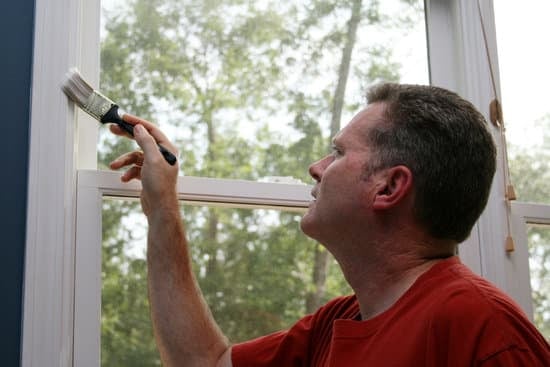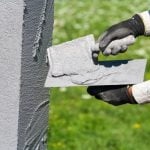Are you a homeowner in need of financial assistance to make necessary repairs or upgrades to your property? If so, home improvement grants might be the solution you’ve been searching for.
These grants can provide homeowners with much-needed funding to complete various home improvement projects, whether it’s fixing a leaky roof, upgrading outdated electrical systems, or making energy-efficient improvements. In this article, we will guide you through the process of qualifying for a home improvement grant and help you understand the importance of these grants and their benefits.
Home improvement grants are designed to assist eligible homeowners in obtaining funds for necessary renovations and repairs. They are typically provided by government agencies at the local, state, or federal levels, as well as non-profit organizations or private foundations. These grants serve an important purpose by helping homeowners maintain safe and comfortable living conditions while positively impacting their property values.
Understanding how home improvement grants work is crucial in order to navigate the application process successfully. In the following sections, we will break down the basics of home improvement grants, including what they are, how they function, and where to start when researching available grant programs. We will also discuss the eligibility criteria that homeowners must meet in order to qualify for these grants and outline what documents are typically required during the application process.
By providing you with essential information on qualifying for a home improvement grant, this article aims to empower homeowners like yourself to take advantage of these valuable resources. With step-by-step guidance on navigating the application process and tips on maximizing your chances of approval, we hope to equip you with all the tools necessary to secure a home improvement grant successfully.
So let’s dive in and explore how you can obtain funding for your much-needed home improvements.
What are Home Improvement Grants and How Do They Work
Home improvement grants are financial assistance programs that aim to help homeowners make necessary improvements or repairs to their properties. These grants can provide funding for various types of home improvement projects, such as improving energy efficiency, repairing structural issues, or upgrading outdated features. Unlike loans, home improvement grants do not need to be repaid, making them an attractive option for homeowners looking for financial support.
To understand how home improvement grants work, it is important to know the basics. Firstly, these grants are typically offered by government agencies at the federal, state, or local level. The funds for these grants come from various sources, such as government allocations or private donations specifically designated for home improvement projects.
There are different types of home improvement grants available depending on the specific purpose and eligibility criteria. For example, there may be grants specifically targeting low-income homeowners or those living in certain areas deemed in need of revitalization. Additionally, some grants may prioritize certain types of improvements that have a positive impact on the community or environment.
To apply for a home improvement grant, homeowners usually need to submit an application detailing their project plans and outlining why they should be considered for funding. Each grant program will have its own set of requirements and application procedures which homeowners must carefully follow. It is also worth noting that while some grants cover the entire cost of a project, others may only provide partial funding and require applicants to contribute towards the expenses.
Overall, home improvement grants play a vital role in enabling homeowners to make necessary upgrades and repairs to their properties without bearing the full cost themselves. By understanding how these grants work and what opportunities are available, homeowners can take advantage of this financial assistance and improve their living conditions while enhancing the value of their homes.
Researching and Identifying Available Home Improvement Grant Programs
Researching and identifying available home improvement grant programs can be a crucial first step in securing funding for your project. There are numerous grants and assistance programs available to homeowners, but it is important to understand where to start your search.
One of the best places to begin is by contacting your local government or housing department. These agencies often offer various home improvement grant programs that cater to specific needs, such as energy efficiency upgrades or repairs for low-income households. They can provide valuable information about the eligibility requirements, application process, and deadlines for these programs.
Another helpful resource is nonprofit organizations and community development agencies that specialize in housing assistance. These organizations often administer grant programs that are specifically designed to assist homeowners with improving their homes. Researching these organizations online, attending informational workshops or seminars, or reaching out directly can help you identify potential grant opportunities.
Additionally, it can be beneficial to explore national and regional grant databases or directories. These comprehensive resources compile information on a wide range of grants available across different sectors, including home improvement. Some examples include the federal government’s Grants.gov website or state-specific websites that list grant programs provided by various agencies.
| Grant Program | Description | Eligibility |
|---|---|---|
| Community Development Block Grants (CDBG) | A federal program that provides funds to local governments for community development activities including housing rehabilitation. | Varies by location; typically based on income level and community need. |
| Weatherization Assistance Program (WAP) | A federal program that aims to increase energy efficiency in low-income households through services like insulation installation and HVAC system upgrades. | Household must meet specific income guidelines and prioritize households with elderly or disabled members. |
| Rural Housing Repair Loans and Grants | A program offered by the U.S. Department of Agriculture that provides loans and grants for low-income homeowners in rural areas to make necessary repairs or improvements. | Applicants must have an income below 50% of the area median income and be unable to obtain affordable credit elsewhere. |
Eligibility Criteria
To be eligible for a home improvement grant, homeowners must meet certain requirements set by the grant program. Understanding these eligibility criteria is crucial in order to determine if you qualify for assistance. Here are some common requirements that homeowners should consider:
- Income: Many grant programs have income limitations to ensure that assistance is provided to those who need it most. Your income will be evaluated to determine if you fall within the specified range. It is important to note that different grants may have different income limits, so it is essential to research and identify the specific program’s guidelines.
- Property Ownership: Generally, you must own the property where the home improvement project will take place in order to qualify for a grant. This means that renters or individuals living in cooperative housing may not be eligible for certain programs. Make sure to check the grant requirements beforehand.
- Home Condition: Grants often prioritize homes that are in critical need of repair or improvement. Some programs specifically target households with safety hazards or health concerns due to the condition of their homes. Before applying for a grant, assess the condition of your property and determine if it aligns with the program’s priorities.
- Purpose of Improvement: Grants typically have specific purposes for which they can be used, such as making homes more energy-efficient, improving accessibility for disabled individuals, or addressing health and safety concerns. It is important to ensure that your home improvement plans align with the objectives of the grant program you are considering.
Once you have identified a potential grant program and reviewed its eligibility criteria, it is recommended to contact the organization administering the grant for further clarification and guidance on whether you meet their requirements.
Keep in mind that eligibility criteria can vary widely depending on the specific grant program and funding source, so it is essential to thoroughly research each opportunity before applying.
If you find that you do not meet all of the eligibility requirements for a particular home improvement grant, don’t be discouraged. There are alternative options and funding sources that you can explore to finance your project. Consider loan programs, tax credits, utility company rebates, or local government assistance programs to help with your home improvement goals.
Being well-informed about the eligibility criteria will help you approach the application process with clarity and confidence, increasing your chances of securing a home improvement grant.
Gathering Essential Documentation
When applying for a home improvement grant, there are several essential documents that you will need to gather and provide as part of your application. These documents serve as proof of eligibility and financial need, and they play a crucial role in determining whether or not you qualify for the grant. Here are some of the key documents that you will typically need to include with your application:
- Proof of Ownership: Most home improvement grant programs require applicants to provide proof that they own the property in need of improvement. This can typically be demonstrated through a copy of the property deed or title.
- Income Verification: Many grant programs have income restrictions, so it is important to provide documentation that proves your income level. This may include recent tax returns, pay stubs, or bank statements. Be sure to check the specific requirements of the grant program you are applying to for their preferred method of income verification.
- Project Estimates: To show the scope and cost of your proposed home improvement project, you will often need to include detailed project estimates from licensed contractors. These estimates should outline what work needs to be done, materials required, and an estimated cost breakdown.
- Property Assessment: Some grants require applicants to provide a property assessment or appraisal report to determine the current value of the home and assess its potential increase after completion of the improvements.
- Proof of Insurance: Certain grant programs may also require applicants to provide proof of homeowners insurance coverage on the property.
It is crucial to carefully review the requirements outlined by each specific home improvement grant program you are considering applying for. Missing or incomplete documentation can result in delays or even rejection of your application. Make sure all copies are clear and legible, organize them properly in a folder or envelope, and submit them along with your completed application form.
By gathering all necessary documentation beforehand and ensuring it is complete and accurate, you will increase your chances of a successful home improvement grant application. Take the time to carefully review all requirements and gather the necessary paperwork, as it is an essential step towards securing funding for your home improvement project.
Tips and Strategies for a Successful Application
As you navigate the process of applying for a home improvement grant, there are several tips and strategies you can employ to maximize your chances of approval. By following these recommendations, you can increase the likelihood that your application will be successful and secure the funding you need for your home improvement project.
One important tip is to thoroughly research and understand the specific requirements and guidelines of the grant program you are applying for. Each grant program may have different criteria and priorities, so it is crucial to tailor your application according to their specific preferences. Take the time to review the eligibility criteria, funding priorities, and any additional documentation or information that may be required. This will ensure that you submit a well-prepared application that addresses all necessary components.
Additionally, it is important to pay attention to detail when completing your application. Double-check all information for accuracy and completeness. Make sure that you have provided all required documentation and that it is organized in a clear and concise manner. Any missing or incomplete information can lead to delays or rejection of your application.
Furthermore, consider including supporting materials such as photographs, drawings, or testimonials from contractors or experts in relevant fields. These additional materials can help strengthen your case and demonstrate the importance and impact of the proposed home improvement project.
By taking these tips and strategies into account when preparing your application for a home improvement grant, you can significantly enhance your chances of success. Remember to thoroughly research each grant program, pay attention to detail, and provide any additional supporting materials that may strengthen your case.
Table: Tips for a Successful Home Improvement Grant Application
| Tips | Strategies |
|---|---|
| Thoroughly research grant program requirements | Tailor application according to program preferences |
| Pay attention to detail | Double-check information for accuracy and completeness |
| Provide all required documentation | Organize documents clearly and concisely |
| Include supporting materials such as photographs or testimonials | Strengthen the case and demonstrate project importance |
Navigating the Application Process
After researching and identifying available home improvement grant programs and understanding the eligibility criteria, homeowners can begin the application process. Navigating the application process for a home improvement grant can seem daunting, but breaking it down into clear steps can make it more manageable.
Step 1: Review the Application Requirements
Before starting the application, carefully review all of the requirements and guidelines provided by the grant program. Make note of any specific documentation or information that is required in order to complete your application successfully. It is important to have a thorough understanding of what is expected before moving forward.
Step 2: Prepare Your Documentation
Once you have reviewed the application requirements, gather all necessary documentation to support your application. This may include proof of income, property ownership documents, contractor estimates or bids, and any other relevant paperwork. Ensure that all documents are current and accurate as incomplete or incorrect documentation could result in a delayed or denied application.
Step 3: Complete the Application Form
With your documentation in order, proceed to fill out the application form provided by the grant program. Pay close attention to each question and provide detailed and honest answers. Double-check your responses for accuracy before submitting the completed form.
Step 4: Submit Your Application
Once you have filled out the application form and gathered all required documents, it is time to submit your application. Some grant programs may accept online submissions while others require physical copies sent by mail or delivered in person. Follow the specific instructions provided by the grant program on how to properly submit your application.
Step 5: Follow Up on Your Application
After submitting your application, it is important to follow up with the grant program to ensure that they have received your submission and have everything they need. Take note of any deadlines for notification or additional information requests from them. Stay organized and remain proactive throughout the process.
By understanding the step-by-step guide to applying for a home improvement grant and following these recommended actions, homeowners can navigate the application process successfully and increase their chances of securing much-needed funding for their home improvement project. Remember that each grant program may have specific requirements and processes, so adapt these steps to fit the particular grant program you are applying to.
Common Mistakes to Avoid
Applying for a home improvement grant can be a great way to secure funding for your renovation project. However, it’s important to be aware of common mistakes that many homeowners make during the application process that could jeopardize their chances of approval. By understanding these pitfalls and avoiding them, you can maximize your chances of successfully securing a home improvement grant.
Failure to Meet Eligibility Criteria
One of the most common mistakes that homeowners make when applying for a home improvement grant is not thoroughly understanding the eligibility criteria. Each grant program has its own specific requirements in terms of income level, location, and types of projects eligible for funding. Before you start the application process, take the time to carefully review the requirements for each grant program you are considering. Make sure you meet all the necessary criteria before proceeding with your application.
Poor Documentation
Another mistake that can seriously hinder your chances of receiving a grant is submitting incomplete or incorrect documentation. The documentation required may include proof of income, property ownership, estimates from contractors, and detailed project plans. Failure to provide all the necessary documents or providing inaccurate information can lead to delays in processing your application or even outright rejection. Take the time to gather all required documentation and double-check it for accuracy before submitting your application.
Lack of Clear Project Description
When completing the application form, it is crucial to provide a clear and detailed description of your home improvement project. Many applications get rejected because they lack essential information about what exactly needs to be done and why the project is important.
Be specific about the improvements you intend to make and how they will benefit your household or community. A well-defined project description not only helps ensure that your application meets the criteria but also highlights the importance of your renovation in securing funding.
By being aware of these common mistakes, you can steer clear of potential pitfalls and increase your chances of successfully securing a home improvement grant. Taking the time to thoroughly review eligibility criteria, gather all necessary documentation, and provide a clear project description will help your application stand out and show that you are a serious candidate for funding.
With attention to detail and careful preparation, you can avoid these pitfalls and increase your chances of receiving the grant you need for your home improvement project.
Securing Additional Funding Sources
While home improvement grants can provide much-needed financial assistance for your renovation project, it’s important to understand that these grants may not cover all of your expenses. In some cases, the grant amount may not be sufficient to cover the entire cost of the project. Therefore, it is crucial to explore alternative funding sources to ensure that you can successfully complete your home improvement plans.
One option to consider is a home equity loan or a home equity line of credit (HELOC). With a home equity loan, you can borrow against the equity you have built up in your home and use the funds for renovations.
This can be a favorable option if you have significant equity in your property and need a larger sum of money upfront. On the other hand, a HELOC allows you to access funds as needed during the renovation process, providing more flexibility in managing your expenses.
Another alternative is personal loans. These loans are not tied to any collateral such as your home and can be used for various purposes, including home improvements. Personal loans usually have higher interest rates compared to home equity loans but may be more accessible for individuals who do not meet the eligibility criteria for other types of financing.
Additionally, you may want to explore government-backed loans specifically designed for home improvement projects, such as FHA 203(k) loans or Energy Efficient Mortgages (EEMs). FHA 203(k) loans provide financing for both purchasing and renovating a property, while EEMs offer incentives for making energy-efficient upgrades. These loans often come with favorable terms and lower interest rates compared to traditional lenders.
Finally, crowdfunding platforms have become increasingly popular as a means of securing funding for various projects, including home improvements. Websites like Kickstarter or GoFundMe allow individuals to create campaigns and raise money from friends, family members, or even strangers who are interested in supporting their cause. Crowdfunding can be an effective way to supplement your budget, especially if you have a compelling story or unique project that resonates with people.
Conclusion
In conclusion, securing a home improvement grant can be a valuable resource for homeowners looking to improve their living conditions. Home improvement grants provide financial assistance to eligible individuals and families, allowing them to make necessary repairs or renovations to their homes. By understanding the basics of home improvement grants and researching available programs, homeowners can increase their chances of qualifying for these funds.
One key aspect of qualifying for a home improvement grant is meeting the eligibility criteria. These requirements vary depending on the specific grant program, but common factors include income limits, property ownership, and the nature of the proposed project. By thoroughly reviewing and understanding the eligibility criteria, homeowners can determine if they qualify for certain grants and avoid wasting time on applications that are unlikely to be approved.
Additionally, gathering essential documentation is an important step in the application process. Homeowners should gather documents such as proof of ownership, income verification, and detailed project estimates. These documents help establish credibility and demonstrate financial need. By being prepared with all necessary paperwork, homeowners can streamline the application process and present a strong case for why they should receive a home improvement grant.
Finally, it’s crucial to navigate the application process carefully and avoid common mistakes that could jeopardize approval. This includes following all instructions carefully, submitting applications before deadlines, and providing accurate and complete information. Engaging with professionals or resources that specialize in helping individuals apply for grants can also be beneficial in ensuring a successful application.
Overall, securing a home improvement grant requires careful planning, research, and attention to detail. By empowering themselves with knowledge about available programs, eligibility requirements, documentation needs, tips and strategies for success, and potential alternative funding sources, homeowners can increase their chances of successfully obtaining a grant. With proper preparation and perseverance through the application process, homeowners can achieve their goal of improving their homes while minimizing financial burden.
Frequently Asked Questions
What grants are available in Illinois?
In Illinois, there are several grants available to assist residents in various areas. One such grant is the Illinois Housing Development Authority (IHDA) program, which offers financial assistance to low-income individuals and families for affordable housing options. Another grant is the Illinois Department of Commerce and Economic Opportunity (DCEO) Small Business Development Program, which provides funding to support small businesses in the state.
Additionally, there are grants specifically aimed at promoting energy efficiency and renewable energy projects, such as the Illinois Energy Now Public Sector Program. There may also be specialized grants available for specific industries or community development projects based on local initiatives.
Who is eligible for government home improvement grant Florida?
The eligibility criteria for government home improvement grants in Florida vary depending on the specific program. Generally, these grants are targeted towards low-income individuals and families who meet certain income requirements set by the government. However, there may be additional factors taken into consideration, such as the condition of the home or any specific needs or disabilities of the homeowner.
Some programs may prioritize veterans or senior citizens. It’s best to research specific government programs or contact relevant agencies like the Florida Housing Finance Corporation to determine eligibility criteria for home improvement grants.
What is the Ohio Housing Assistance Grant Program?
The Ohio Housing Assistance Grant Program aims to provide financial support to Ohio residents who are struggling with housing affordability issues. This program is administered by the Ohio Development Services Agency (ODSA), and it offers assistance in various forms like emergency rent and utility payments or rental subsidies for eligible individuals and families facing homelessness or imminent eviction due to financial hardship.
The Ohio Housing Assistance Grant Program aims to stabilize housing situations and prevent homelessness by bridging temporary gaps in affordability through its various assistance options tailored to meet different circumstances faced by Ohio residents.

I’m thrilled to have you here as a part of the Remodeling Top community. This is where my journey as an architect and remodeling enthusiast intersects with your passion for transforming houses into dream homes.





